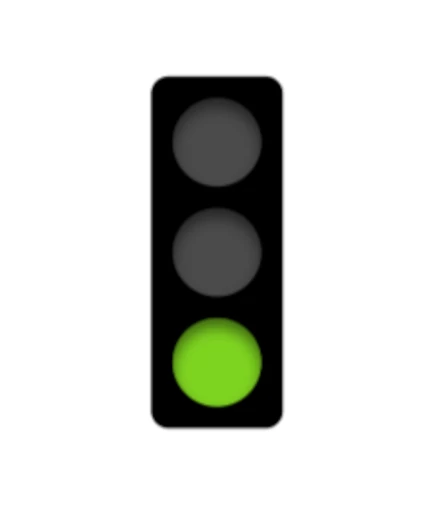Discrete gauges¶
Discrete gauges are graphical objects, which represent discrete scalar values. The range value is divided into a defined number of blocks, and each block has a specific graphical representation.
Users can indeed choose the most appropriate block according to the number of output needed.
For instance, if users need to represent a binary value, the most suitable gauge is the Like, as it has only 2 outputs.
The Discrete gauges only have one tab, which is the INPUT tab.
Below, users can find the detailed description of the available options and their corresponding GOLD references.
Subsection |
Option |
Description |
GOLD ref |
|---|---|---|---|
Input options |
Attribute |
It shows the attribute name and type. |
|
Aggregate Operator |
It defines the operation users want to perform on data. |
input |
|
Free Formula |
Where users can insert a specific formula, if needed. |
input |
|
State Options |
Label |
It shows the possible graphical outputs of the gauge. |
input |
Filter |
By clicking the SET FILTER button, a configuration window will appear. Check the instructions to set filters for the attribute type you dragged onto the gauge here. |
|
|
Code |
Here the filter code will be shown. |
Once all the configurations have been set, click APPLY to ultimate the process.
As a result, according to the outcomes of the operation, the gauge will assume the output that was previously associated to a certain condition.
Note
The Discrete gauges options cannot be parametrized.
Note
One of the labels will necessarily remain unselected, so that if none of the conditions is satisfied, the gauge will assume the aspect of the remaining unset label. Users can specify which Label will remain unset in the INPUT window.
Most of the values in the Layout options are common to all the Discrete gauges, except for some features related to the graphical aspect of each specific gauge, which are explained in detail below.
Traffic light¶

By default, this gauge has the aspect of a traffic light with a green light on.
According to the results related to the filters and the conditions set by the user, the colors of the traffic light will vary.
The three possible outputs are: red, yellow and green color.
Like¶

By default, this gauge has the aspect of a thumbs up.
According to the results related to the filters and the conditions set by the user, the thumb position will vary.
The two possible outputs are: thumbs up and thumbs down.
Weather¶

By default, this gauge has the aspect of a sun.
According to the results related to the filters and the conditions set by the user, the weather icon will vary.
The seven possible outputs are: storm, heavy rain, rain, cloud, slightly cloudy, slightly sunny and sun.
Rulebot¶

By default, this gauge has the aspect of a happy green Rulex icon.
According to the results related to the filters and the conditions set by the user, the color and the mood of the Rulebot will vary.
The possible five outputs are: angry and red, sad and orange, neutral and blue, smiling and light-green, happy and green.